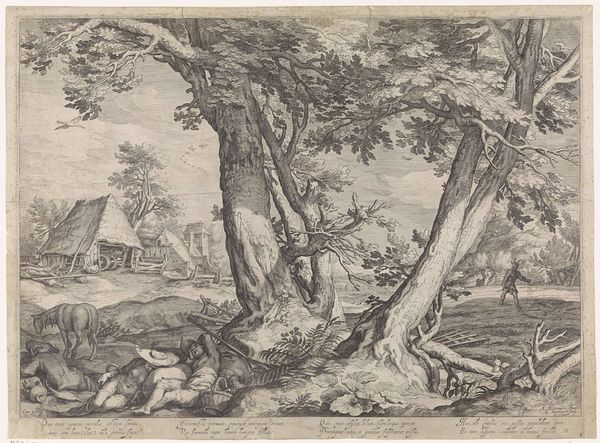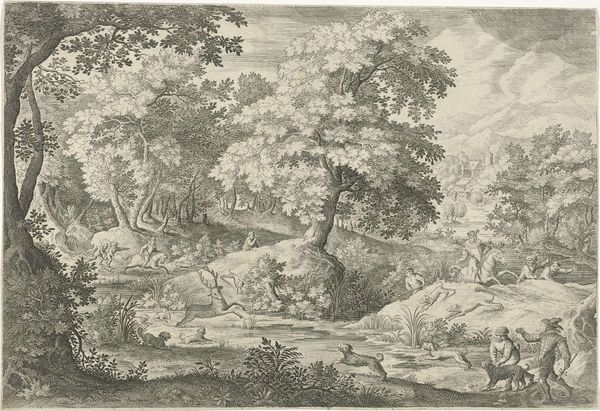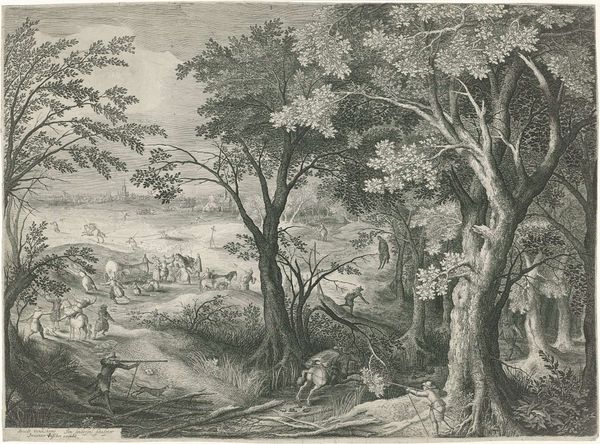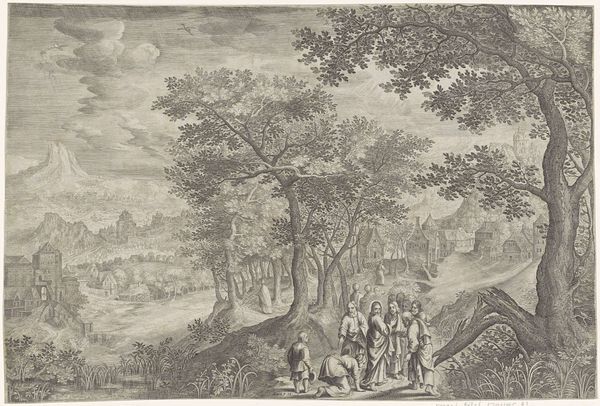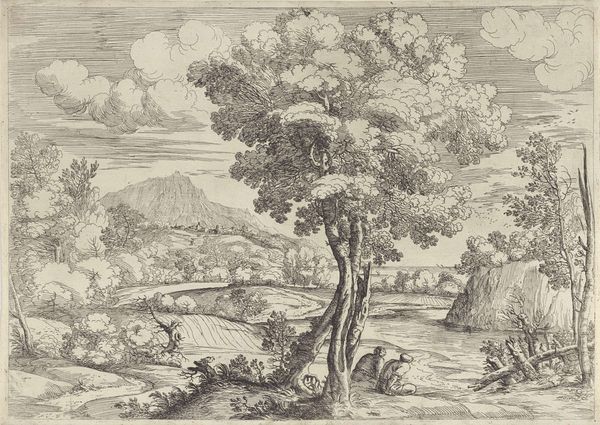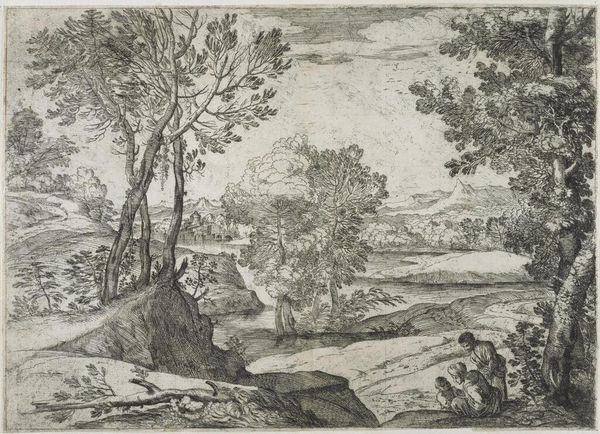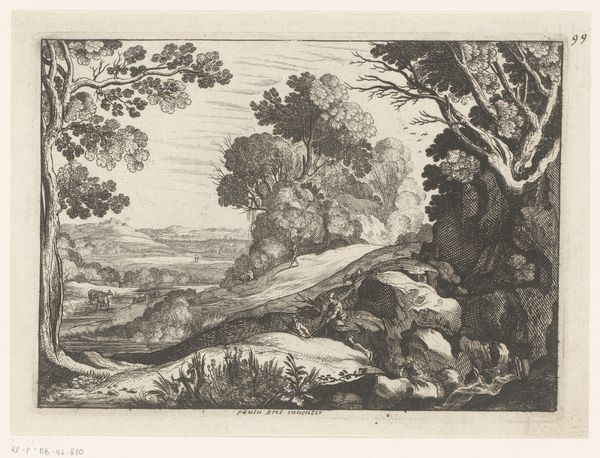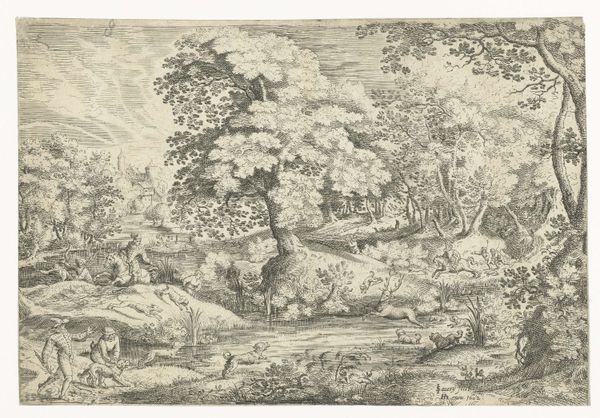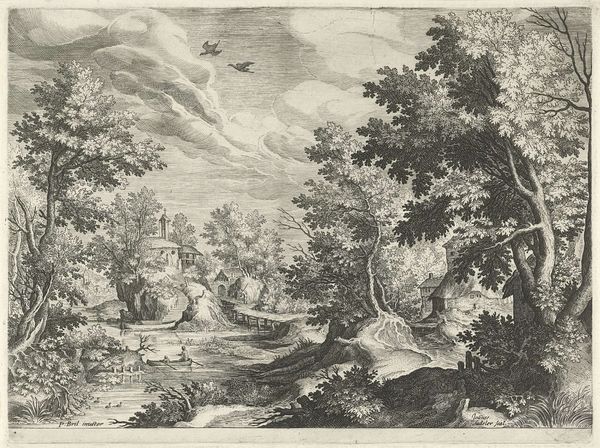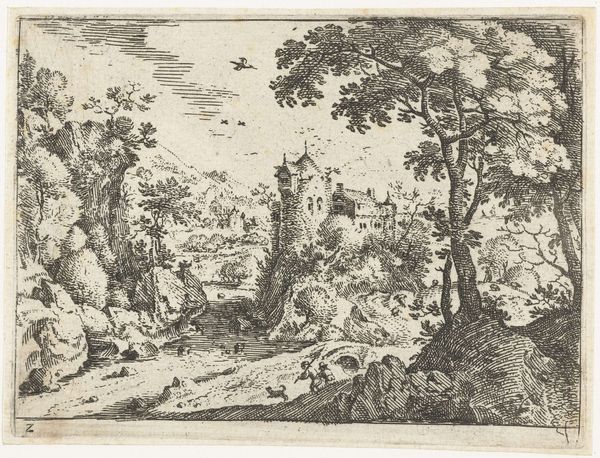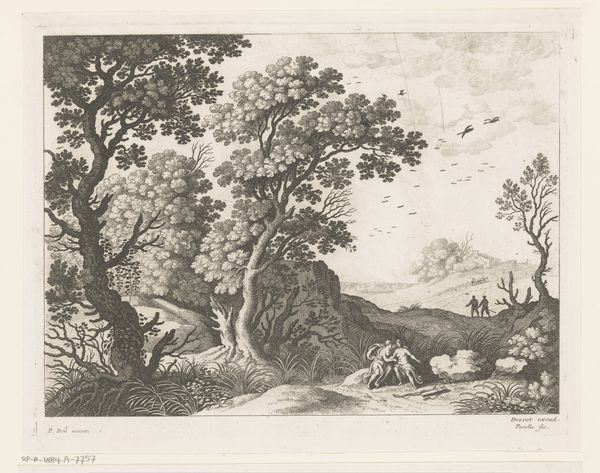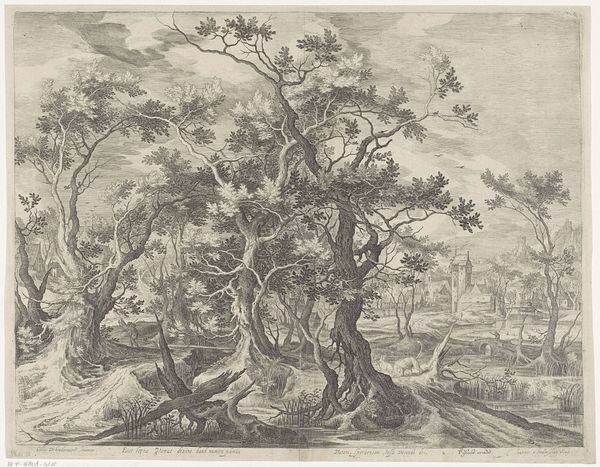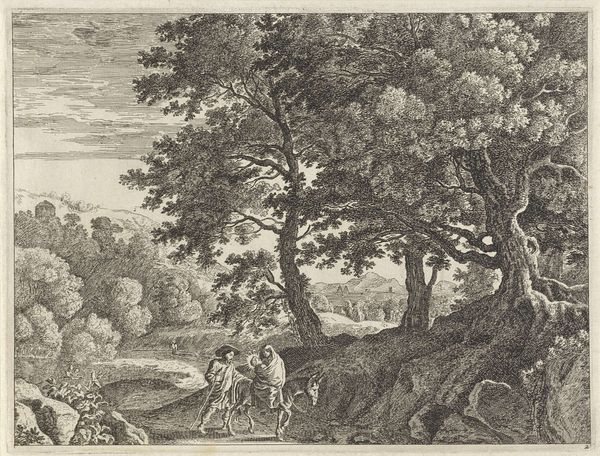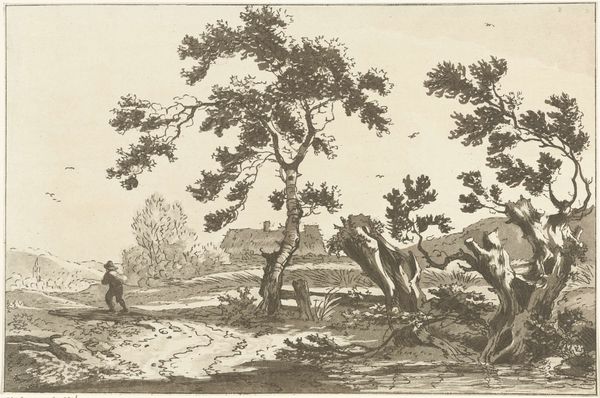
print, etching, engraving
#
baroque
# print
#
etching
#
landscape
#
genre-painting
#
engraving
Dimensions: height 208 mm, width 275 mm
Copyright: Rijks Museum: Open Domain
Curator: Ah, yes, here we have "Wooded Landscape with a Hare Hunt," an etching and engraving dating from 1600 to 1620, attributed to Johann Sadeler I. It resides here at the Rijksmuseum. Editor: The scene is instantly arresting! The composition, this sort of framed wilderness...it evokes a sense of romantic isolation, doesn’t it? Melancholy, even, despite the hunting activity. Curator: Precisely! Landscapes in this era often served more than just scenic value. They were charged with symbolic weight. The forest itself becomes a stage for human drama, for social structures playing out through the hunt. Think about how hunting functioned as an aristocratic pastime, solidifying class distinctions. Editor: So, the "genre painting" tag rings true. It's not simply a picture of a forest; it's about who gets to be *in* the forest, engaging in the hunt. And, of course, who *becomes* hunted. The city on the horizon in the middle ground, could it be an emblem of controlled civilization versus the untamed woods? Curator: It’s likely! The stark contrast is important. Notice how the figures are carefully positioned, creating little narratives within the larger scene. The resting hunters in the foreground, seemingly oblivious to the chaotic pursuit unfolding around them... Editor: ...it is almost mocking them! The hares’ frantic energy creates a frantic feeling! I'm struck by the emotional subtext: privilege, leisure, against survival and fear. How are these symbols employed? The density of the forest itself appears protective for one side and perilous for another, depending on your vantage. Curator: Indeed! And Sadeler’s technique intensifies this dynamic. The intricate lines, the play of light and shadow...it’s almost theatrical. Engraving and etching combined create a depth that mirrors the psychological layers at work here. He is creating density as an act of preservation for some while rendering exposure for others! Editor: Well, considering the print’s journey through time, reproduced and viewed by countless eyes, one wonders what this image has come to symbolize, if it's cultural continuity or if we can impose contemporary ethics to interpret it critically in our new moment. What was meant by it then can become malleable depending on the time when it’s interpreted. Curator: Yes! A work of art whose symbols are forever adapting within cultural tides is the goal. This piece offers such rich interpretive pathways and has given us ample to consider!
Comments
No comments
Be the first to comment and join the conversation on the ultimate creative platform.
